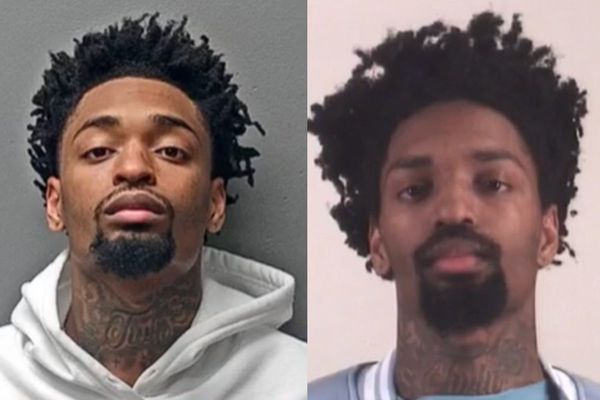
Music speaks to every human condition – a truism, but like the best, sharp and pertinent. In the case of some composers, personal circumstances act as a patina on their work. It is hard to listen to Olivier Messiaen’s Quartet for the End of Time without recalling that it was written in a prisoner-of-war camp. So too with Dmitri Shostakovich. His ill-treatment at the hands of the Soviet regime permeates his compositions and his career. Last week the London Symphony Orchestra performed his Symphony No 13, “Babi Yar” (1962) at the Barbican, under the astute direction of Gianandrea Noseda. As principal guest conductor of the LSO, he is midway through recording a complete Shostakovich symphonies cycle with these players. Whether or not because he spent part of his career in Russia, Noseda understands this music to the core. In attack, in volume, in clarity, the musicians go with him to the edge of the precipice. This was a thrilling performance.
Almost banned at its premiere, the symphony deals with the slaughter, in Kyiv, of 34,000 Jews by Nazi Germans in September 1941. All mention of the massacre was taboo in the Soviet Union. Compelled by conscience, Shostakovich wanted to break that silence and address the issue of antisemitism. He set controversial texts by Yevgeny Yevtushenko: Babi Yar, and four other poems on aspects of daily Soviet life. The resulting work, for orchestra, bass soloist and male voice choir, is a choral cantata of immense, and intense, drama. Large forces packed the Barbican stage: additional low woodwind, four varieties of keyboard, two harps and 11 kinds of percussion, including the woodblocks that rattle and taps menacingly in the movement called In the Store. Soviet women, in shawls and scarves, silently queue for groceries: “There’s a smell of onions, cucumbers, a smell of ‘Kabul’ sauce.”
Outbursts of oompah brass and timpani, in strident, sardonic mood, bring to mind passages in the composer’s opera Lady Macbeth of Mtsensk. Shostakovich excels at loudness, but it is never a matter of mere decibels (though one or two musicians at times covered their ears for protection). Control and balance, expertly mustered here, are far harder to achieve than volume. Equally, at the other end of the sound spectrum, the quiet, lyrical passages must have tensile strength: muted, shadowy strings, a lone, lamenting tuba. As the chorus breaks into a workers-style marching song, the viola section sets off with a frenetic solo passage – a prolonged shiver of fast notes for several bars, adroitly led by Edward Vanderspar. This was his last concert after 32 years as LSO principal viola, a high on which to end. The Swiss-Ukrainian bass Vitalij Kowaljow, rich-voiced and gravelly, led the drama, with the tenors and basses of the London Symphony Chorus and London Philharmonic Choir, trained by Aidan Oliver, revelling in the freedom of singing, mostly, in unison.

The concert opened with Beethoven’s Piano Concerto No 5 in E flat, Op 73, “Emperor”, with Simon Trpčeski as soloist. Expressed in words, the Macedonian pianist did what other great players might: nimble fingerwork, bell-like trills, dazzlingly precise runs, a clear sense of structure and momentum. Only what you would hope, but here sounding new and extraordinary. Whether we praise Trpčeski, the partnership with the LSO and Noseda, or Beethoven, I cannot say. I’ll settle for all. The prolonged, cheering applause suggested others had the same reaction.
Beethoven never himself performed that work in public, his deafness by the time of its 1811 premiere too absolute. Whatever the exact nature of his auditory loss, we know he spent his early years able to hear. What experience of music is open to those who are deaf from birth? This question is being addressed by the coloratura soprano Charlotte Hoather. Light-voiced and virtuosic, she has built a career despite being deaf in one ear, a condition she has kept silent about until now for fear of prejudice. I first encountered her work six years ago in the pioneering and highly successful BambinO, an opera for babies.
Now she has written a version of Alice’s Adventures in Wonderland, called Down the Rabbit Hole, with witty music by Nino Russell (known as Zollino), performed by Hoather as Alice, the Deaf actor Zoë McWhinney (Deaf, capital D, being preferred by those deaf all their lives, or before they learned to talk), versatile pianist George Todica and narrator-interpreter Naomi Gray. Energetically and imaginatively acted and staged, the work has been given 26 performances in the past month, to more than 1,000 children in schools in London and Hoather’s home county of Cheshire.
The final performance, which I attended, took place at the Frank Barnes school for deaf children, with pupils from neighbouring King’s Cross Academy joining in. What would the children have heard? According to Frank Barnes’s head teacher, Dani Sive, pupils at his school are mostly severely to profoundly deaf. “Some will have access to some sounds, some nothing. Some make good use of hearing aids and cochlear implants to access music or environmental sounds, others less so. Each person is different and will interpret the sounds they hear differently.”

The free flow of song, dance, clever piano riffs, mime and sign language absorbed every child present. This tiny enterprise has incalculable resonance. Now Hoather and her group want to raise funds for a more extended tour. They deserve every success.
Star ratings (out of five)
LSO/Noseda ★★★★
Down the Rabbit Hole ★★★★★







